Abstract
Few bacteria from the corn rhizosphere grew in media with 50 μg of mancozeb per ml. A mancozeb-resistant Pseudomonas strain from the rhizosphere was serially subcultured in media containing mancozeb and spectinomycin until it was resistant to 175 μg of mancozeb and 850 μg of spectinomycin per ml. The population of the pseudomonad added to soil fell to low numbers in 6 days in unamended or glucose-amended soil, but its numbers exceeded 105/g for at least 12 days if the soil was supplemented with mancozeb. The numbers of this organism remained small on corn roots derived from untreated, inoculated seeds, but the population was two or more orders of magnitude greater on roots derived from mancozeb-coated seeds. The abundance of the inoculum strain on the 3-cm portion of roots nearest the stem declined markedly after about 1 week, but applying urea to the foliage reduced or prevented the decline. The numbers of the pseudomonad on segments of roots 3- to 6- and 6- to 9-cm from the stem were higher on plants derived from the mancozeb-coated seeds. Applying spectinomycin to the foliage did not promote growth of the bacterium. This method is proposed as a means to establish an introduced bacterium on plant roots.
Full text
PDF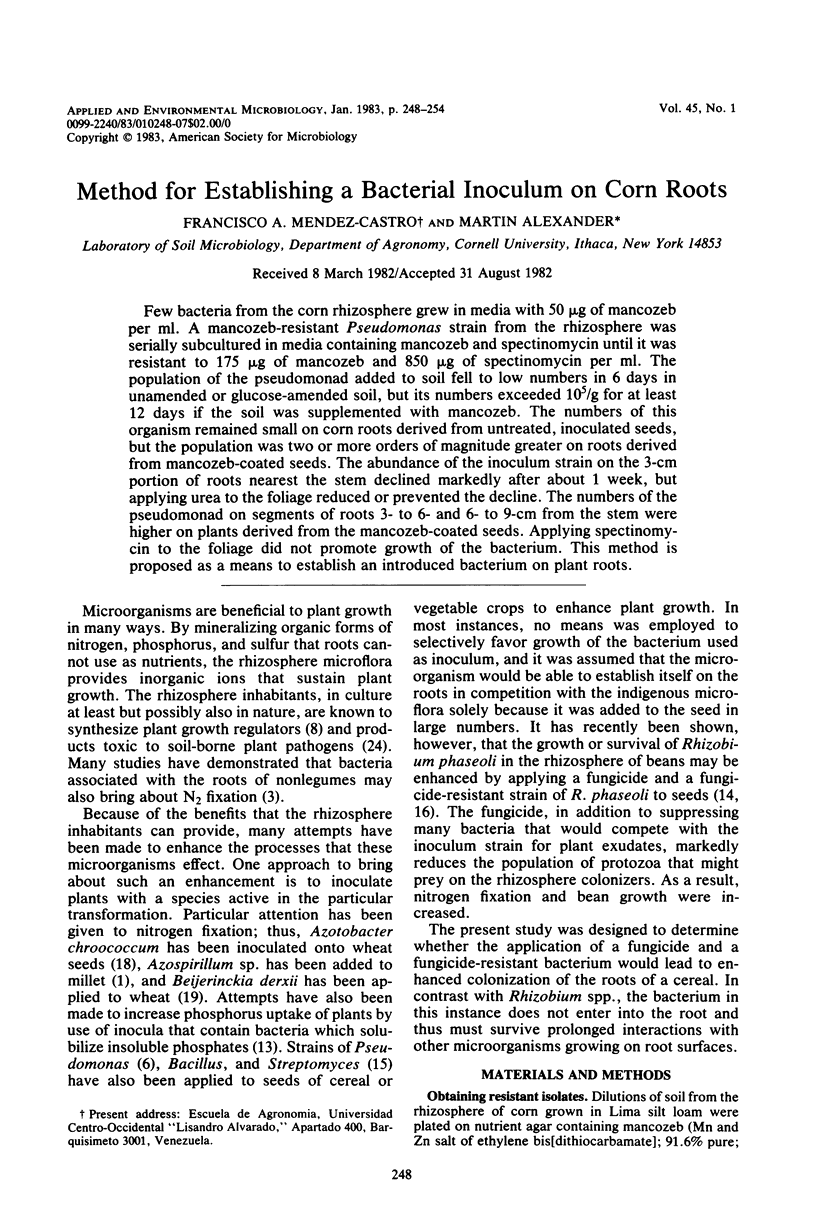
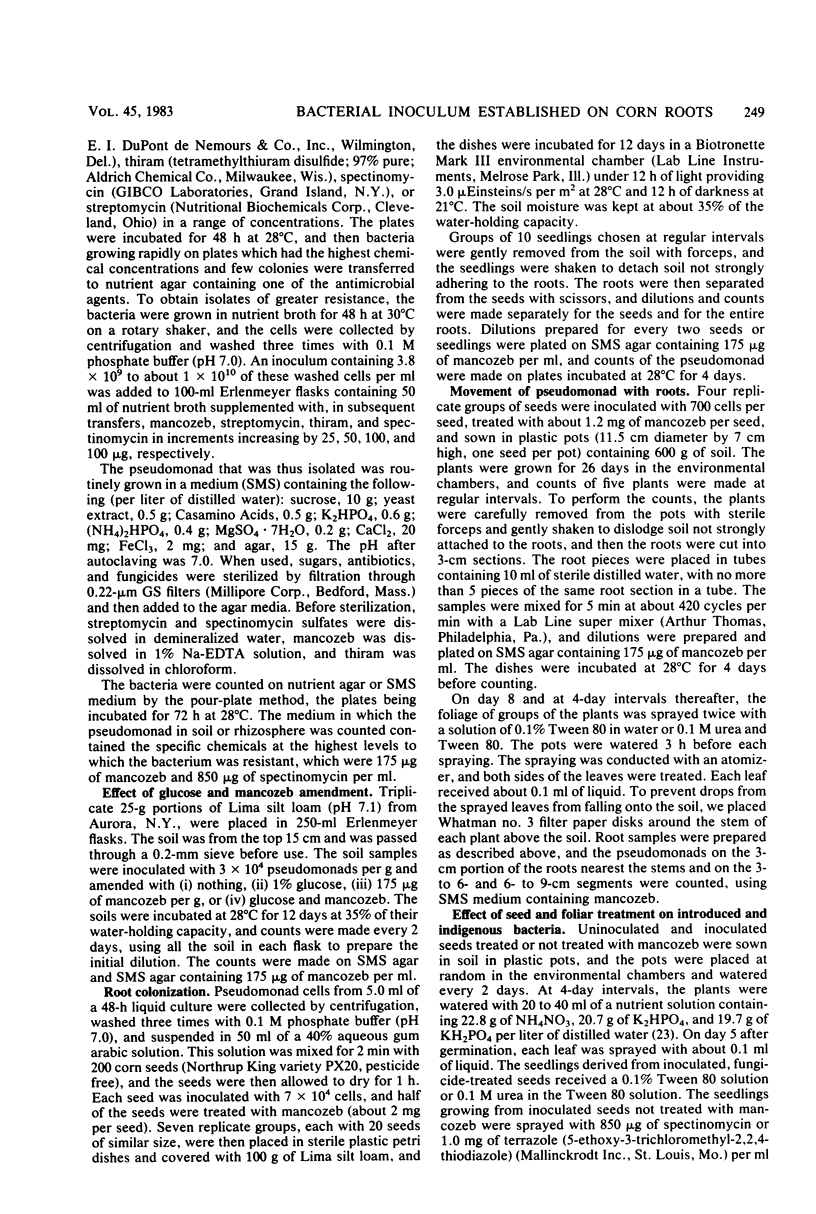
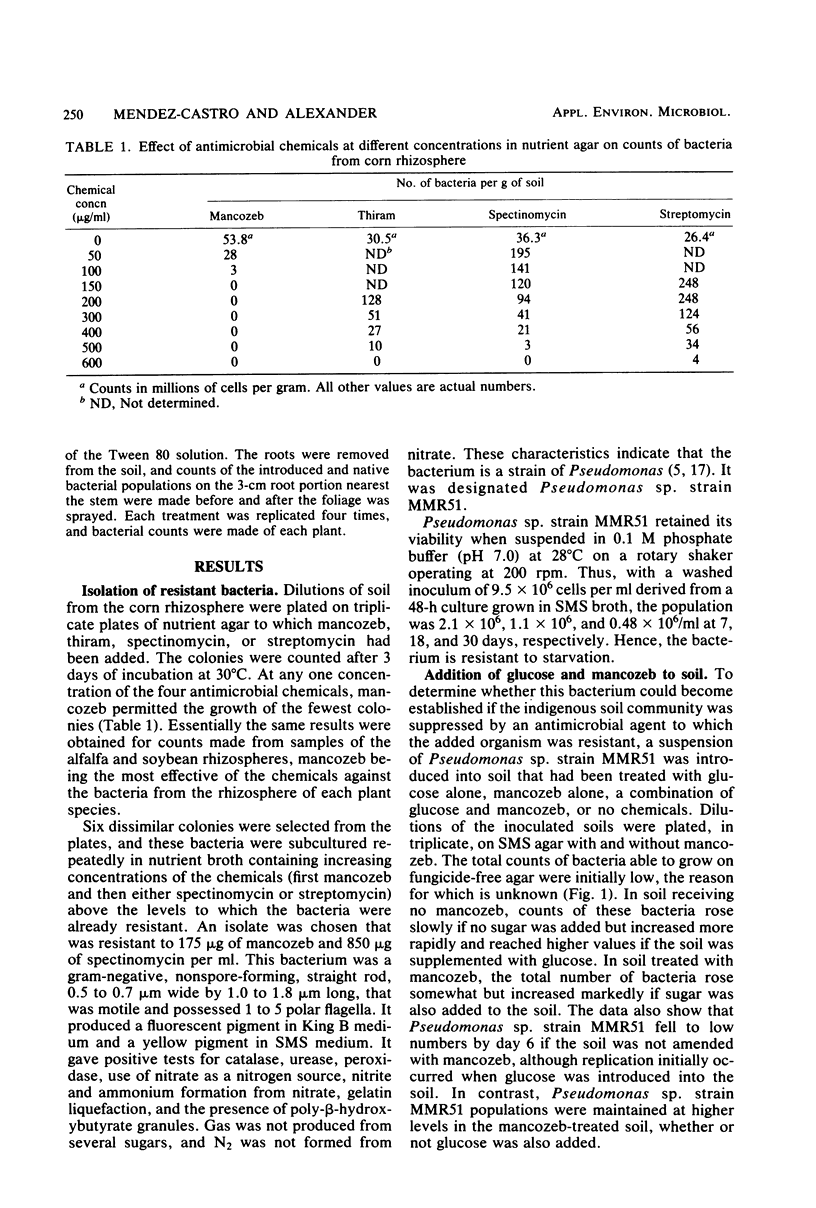
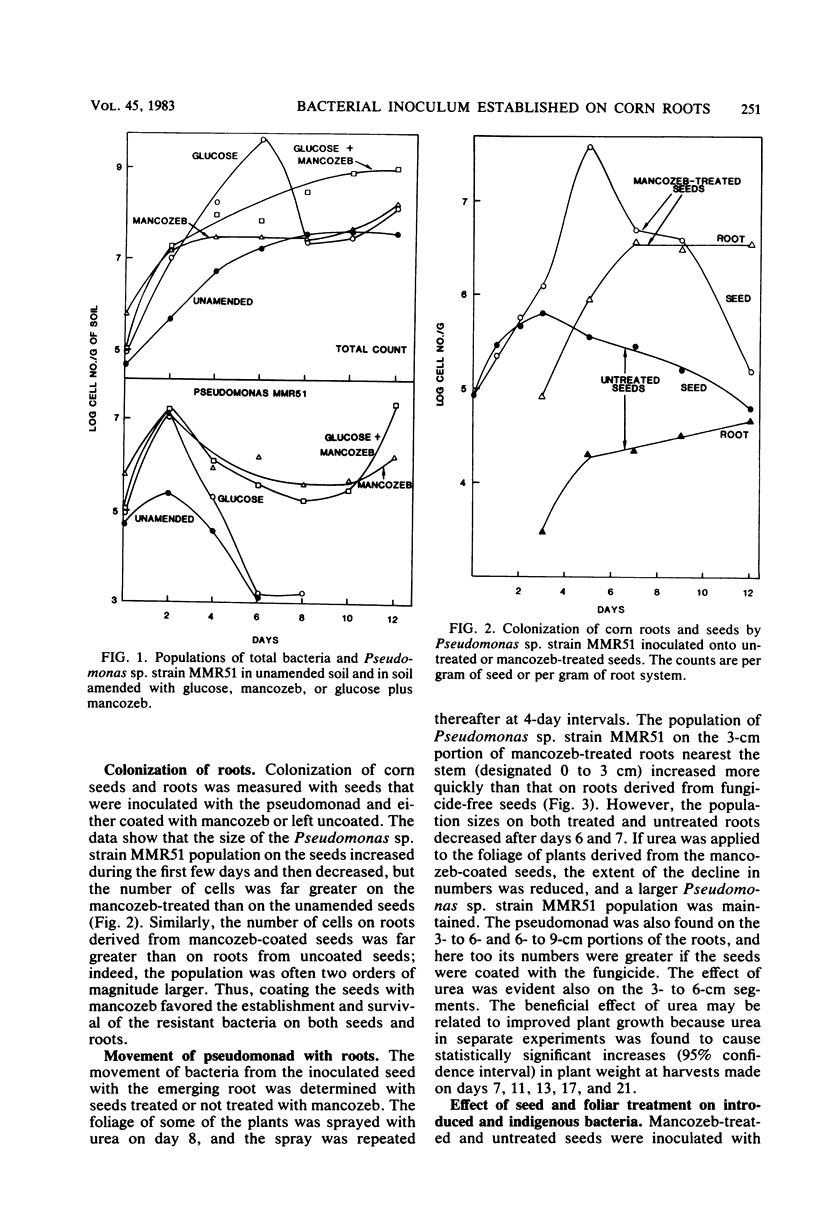
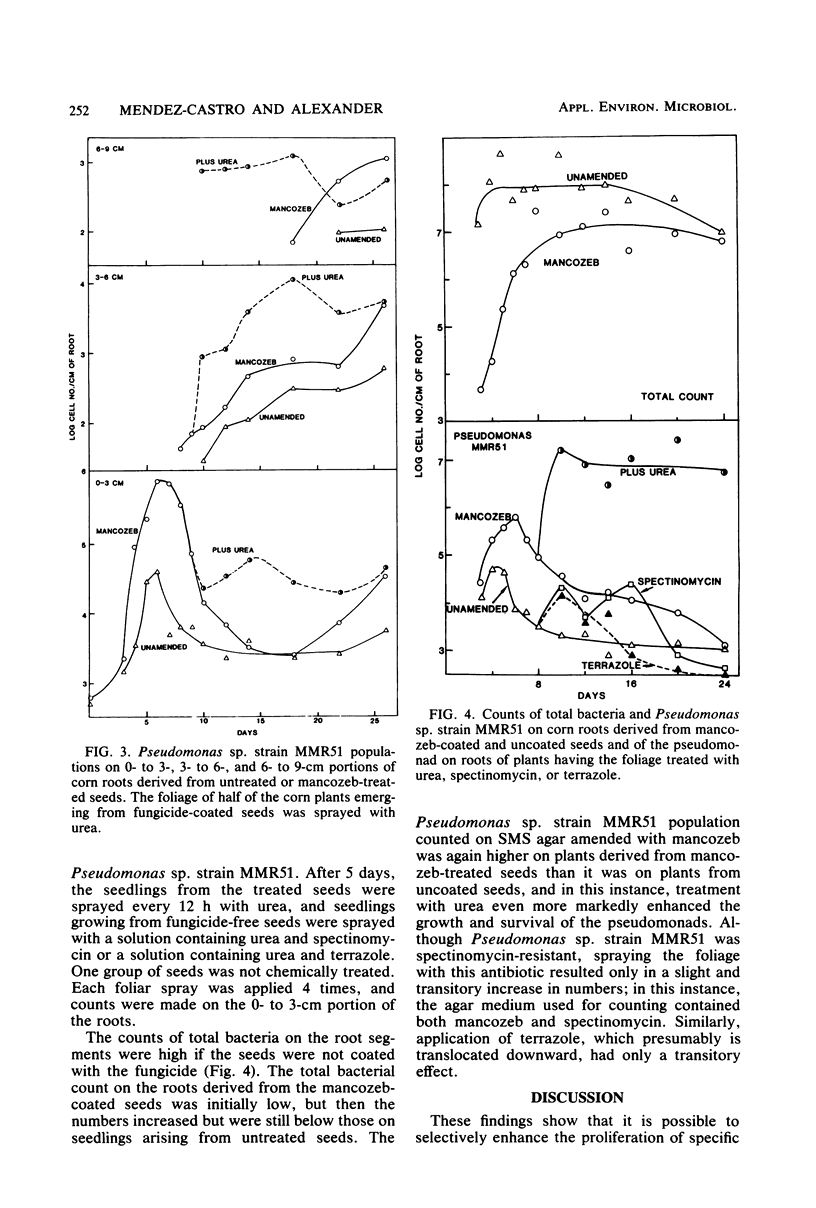
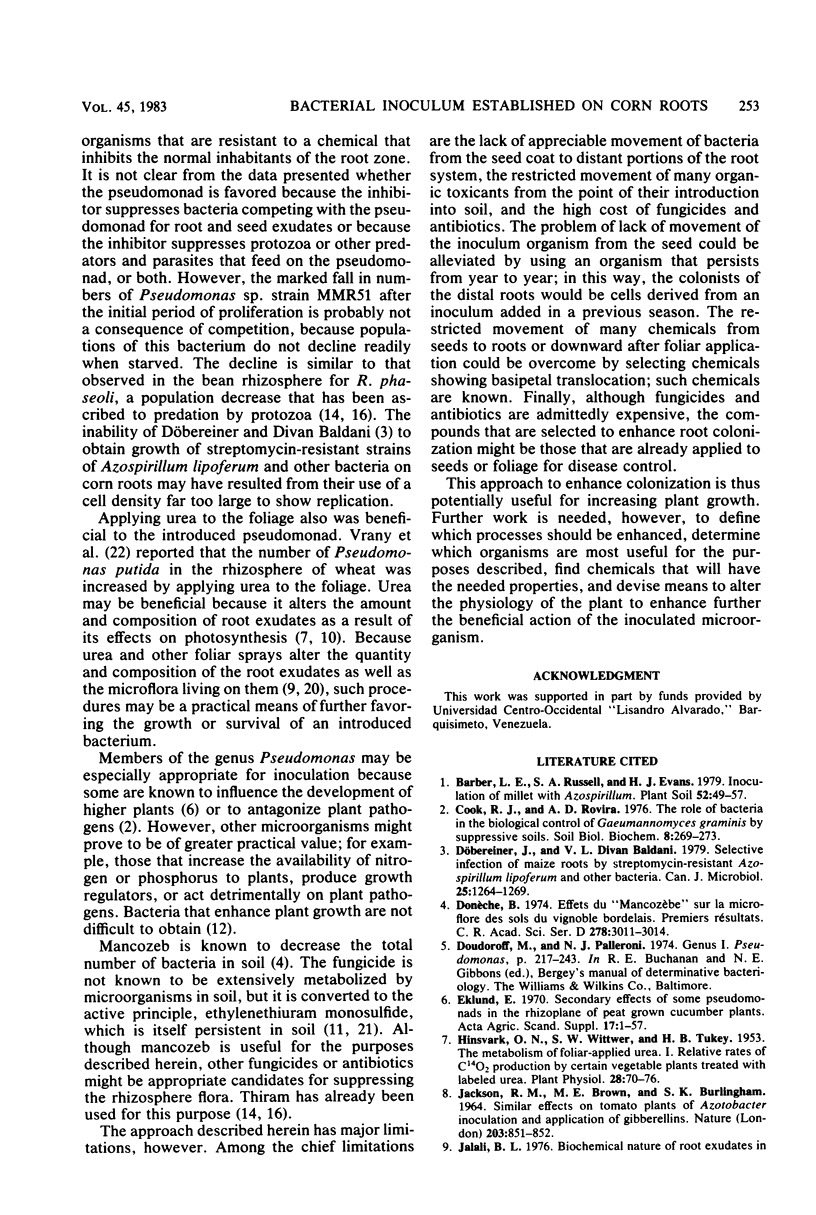
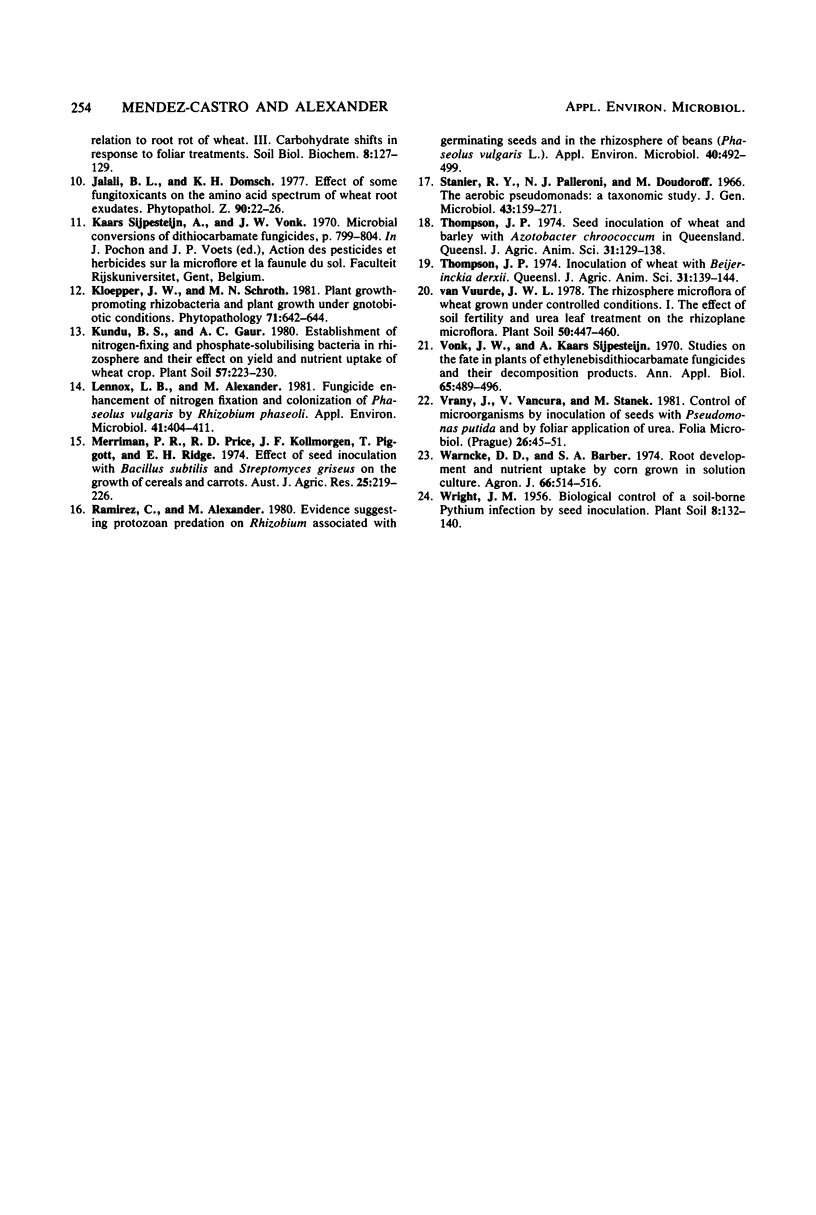
Selected References
These references are in PubMed. This may not be the complete list of references from this article.
- Hinsvark O. N., Wittwer S. H., Tukey H. B. The Metabolism of Foliar-Applied Urea. I. Relative Rates of CO(2) Production by Certain Vegetable Plants Treated with Labeled Urea. Plant Physiol. 1953 Jan;28(1):70–76. doi: 10.1104/pp.28.1.70. [DOI] [PMC free article] [PubMed] [Google Scholar]
- Lennox L. B., Alexander M. Fungicide Enhancement of Nitrogen Fixation and Colonization of Phaseolus vulgaris by Rhizobium phaseoli. Appl Environ Microbiol. 1981 Feb;41(2):404–411. doi: 10.1128/aem.41.2.404-411.1981. [DOI] [PMC free article] [PubMed] [Google Scholar]
- Ramirez C., Alexander M. Evidence Suggesting Protozoan Predation on Rhizobium Associated with Germinating Seeds and in the Rhizosphere of Beans (Phaseolus vulgaris L.). Appl Environ Microbiol. 1980 Sep;40(3):492–499. doi: 10.1128/aem.40.3.492-499.1980. [DOI] [PMC free article] [PubMed] [Google Scholar]
- Stanier R. Y., Palleroni N. J., Doudoroff M. The aerobic pseudomonads: a taxonomic study. J Gen Microbiol. 1966 May;43(2):159–271. doi: 10.1099/00221287-43-2-159. [DOI] [PubMed] [Google Scholar]
- Vraný J., Vancura V., Stanek M. Control of microorganisms in the rhizosphere of wheat by inoculation of seeds with Pseudomonas putida and by foliar application of urea. Folia Microbiol (Praha) 1981;26(1):45–51. doi: 10.1007/BF02927222. [DOI] [PubMed] [Google Scholar]


